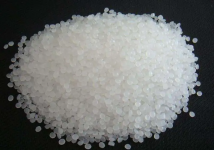read: 728 time:2025-06-03 19:28:05 from:化易天下
Understanding why benzoic acid is more acidic than phenol requires delving into the molecular structure and the electronic effects within these two compounds. The differences in acidity between benzoic acid and phenol can be attributed to several factors, including resonance stabilization, inductive effects, and the nature of the functional groups present.
The key to understanding why benzoic acid is more acidic than phenol lies in the stability of their conjugate bases. When benzoic acid donates a proton (H+), it forms the benzoate ion. This ion is highly stabilized by resonance, as the negative charge on the oxygen atom can be delocalized across the benzene ring through the carboxylate group (-COO-). This extensive delocalization of charge across the ring significantly lowers the energy of the benzoate ion, making benzoic acid more likely to lose a proton.
In contrast, when phenol loses a proton, it forms the phenoxide ion. Although the phenoxide ion also benefits from resonance stabilization, the negative charge is delocalized only within the aromatic ring and the oxygen atom, not across an additional carboxylate group. This lesser degree of resonance stabilization makes the phenoxide ion less stable than the benzoate ion, resulting in phenol being less acidic than benzoic acid.
Another reason why benzoic acid is more acidic than phenol is the presence of the electron-withdrawing carboxyl group (-COOH) in benzoic acid. The carboxyl group is highly electronegative and exerts a strong inductive effect, pulling electron density away from the rest of the molecule. This electron withdrawal further stabilizes the conjugate base (benzoate ion) by reducing the electron density on the negatively charged oxygen atom.
Phenol, on the other hand, has a hydroxyl group (-OH) attached to the benzene ring. The hydroxyl group is less effective in withdrawing electron density compared to the carboxyl group, leading to a weaker inductive effect. As a result, the conjugate base (phenoxide ion) in phenol is less stabilized, making phenol less acidic compared to benzoic acid.
The difference in the acidity of benzoic acid and phenol also stems from the nature of their functional groups. Benzoic acid contains a carboxylic acid group (-COOH), which is inherently more acidic than the hydroxyl group (-OH) found in phenol. Carboxylic acids are known for their ability to donate protons more readily, primarily due to the resonance stabilization of the carboxylate ion and the strong electron-withdrawing effect of the carbonyl group (C=O) within the carboxylic acid.
Phenol's hydroxyl group does not provide the same level of stabilization for the conjugate base, nor does it have as strong an electron-withdrawing effect as the carboxyl group. This difference in the functional groups directly contributes to the higher acidity of benzoic acid compared to phenol.
The pKa values of benzoic acid and phenol provide a quantitative measure of their acidity. Benzoic acid has a pKa value of approximately 4.2, indicating that it is a stronger acid. Phenol, on the other hand, has a pKa of around 10, which reflects its weaker acidity. The lower pKa of benzoic acid correlates with its higher acidity, confirming why benzoic acid is more acidic than phenol.
In summary, benzoic acid is more acidic than phenol due to the greater resonance stabilization of its conjugate base, the stronger inductive effect of the carboxyl group, and the inherently more acidic nature of the carboxylic acid group compared to the hydroxyl group in phenol. Understanding these factors provides a clear explanation for the difference in acidity between these two compounds.

Jincheng Petrochemical's 300000 ton polypropylene plant successfully trial production, 2024 polypropylene market analysis

The ABS market remains sluggish, what is the future direction?

Market differentiation of bisphenol A intensifies: prices rise in East China, while prices generally decline in other regions

The production method and process flow of silicone acrylic lotion, and what are the common raw materials